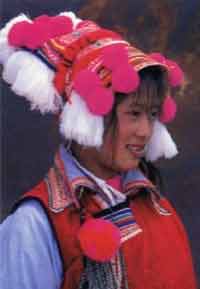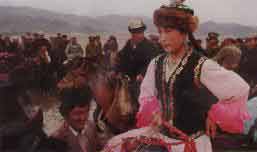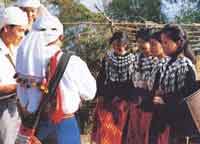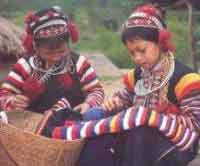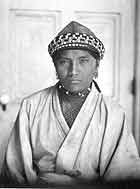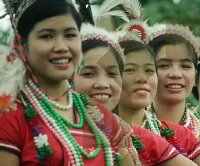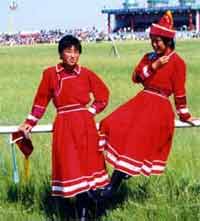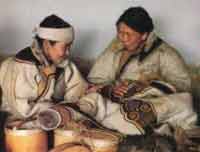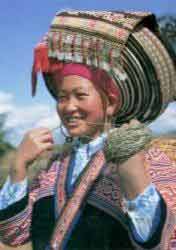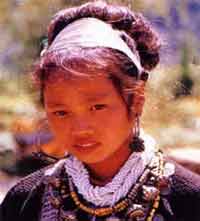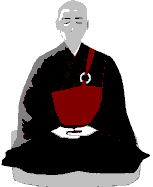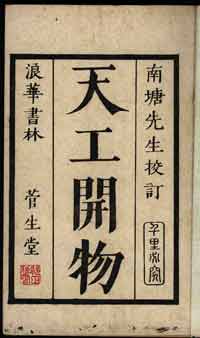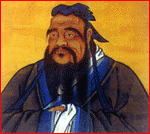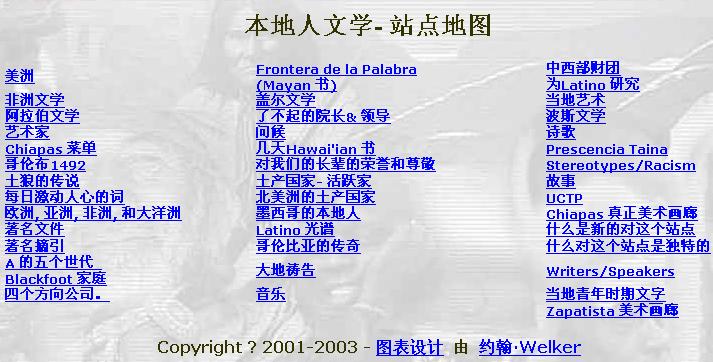To view this page in another language, please click here:
Other Languages
|
| |||||||||||||||||||||||||||||||||||||||||||||||||||||||||||||||||||||||||||||||||||||||||||||||||||||||||||||||||||||||||||||||||||||
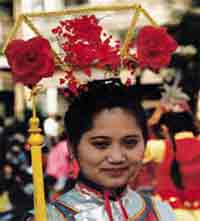 |
"I dedicate this page to
|
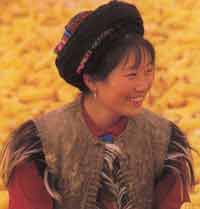 |
|||||||||||||||||||||||||||||||||||||||||||||||||||||||||||||||||||||||||||||||||||||||||||||||||||||||||||||||||||||||||||||||||||
Indigenous peoples of ChinaIndigenous peoples of Tibet Chinese Nationalities
|
|||||||||||||||||||||||||||||||||||||||||||||||||||||||||||||||||||||||||||||||||||||||||||||||||||||||||||||||||||||||||||||||||||||
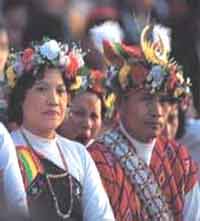 |
|
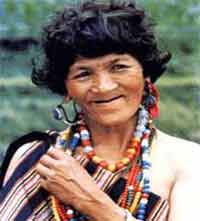 |
|||||||||||||||||||||||||||||||||||||||||||||||||||||||||||||||||||||||||||||||||||||||||||||||||||||||||||||||||||||||||||||||||||
|
|
|
||||||||||||||||||||||||||||||||||||||||||||||||||||||||||||||||||||||||||||||||||||||||||||||||||||||||||||||||||||||||||||||||||||
|
The Chinese are classified as the Mongoloid (the 'yellow' race) along with Korean, Japanese, Native Americans, Mongols, Eskimos, and so on. The Yellow race makes up 33% of the world population. The Caucasoid (the "white" race), including the Australian aborigines, Arabs, Indians, Polynesians, and so on, accounts for 59% of the world population, while the Negroid (the 'black' race) accounts for only 8%. It is believed the Negroid and Caucasoid are more closely related than the Mongoloid, which gave rise to the regionalism hypothesis whereby the Mongoloid has evolved from homo erectus while the Negroid and the Caucasoid have evolved from a common ancestor homo antecessor. The Mongoloid has dry earwax while others have wet earwax. No one knows exactly where the Chinese came from or who they are. It is believed that the humanoid - human-like creatures - appeared about two and half million years ago and that the humans as we know today, homo sapiens sapiens, came into being some 35,000 years ago. Although the oldest known writings - written language - date back only 5,000 years at best, we can 'read' our history by studying fossils, our DNA, geological data, cosmological data, our language, and so on, and from these records, we can determine the origin, or rather the prehistoric history, of the Chinese race, the 'White-clad People' (called "Dong-yi" -- the eastern barbarians, 濊貊族 by Chinese historians).
Ancient Chinese
had different terms for barbarians in four directions. Dongyi or
Yi-of-the-East will be designations for people in the east, i.e., the
offsprings from the two clans of Tai-hao-shi and Shao-hao-shi. The term
meant for different people during different stages of history. Though,
legendary overlords of China, like Yandi (Fiery Lord) and Huangdi
(Yellow Lord, r. bc 2697-2599 ?), might be both born near Qufu of
Shandong Province in the east, and Lord Yandi, Lord Huangdi and Lord
Zhuanxu were recorded to have treated Qufu of Shandong as the capital.
Sima Qian's "Shi Ji" mentioned that Huangdi (Yellow Lord), in the east,
climbed Mount Wan-shan (i.e., Fan-shan in today's Langya, Shandong
Peninsula). Among the ancient eight Chinese overlords, clearly seven
belonged to the same old family. The lineage of Yandi (Shen-nong),
Huangdi, Shaohao, Gaoyang (Lord Zhuanxu), Gaoxin (Diku), Tangyao (Lord
Yao), and Yushun (Lord Shun) is spelled out in prehistory section. Even
barbarians could be traced to the same family as Chinese founders. Kong
An'guo of Han Dynasty claimed that among the four evil tribes exiled by
Lord Yao, Hundun were infilial descendants of Huangdi the Yellow Lord;
Gun was infilial son of Lord Zhuanxu; the 'Sanmiao' (Qiangic) people
were said to be infilial descendants of Yandi the Fiery Lord. |
|||||||||||||||||||||||||||||||||||||||||||||||||||||||||||||||||||||||||||||||||||||||||||||||||||||||||||||||||||||||||||||||||||||
|
Achang
|
50+ Indigenous Groups 7%
of population
|
Salar |
|||||||||||||||||||||||||||||||||||||||||||||||||||||||||||||||||||||||||||||||||||||||||||||||||||||||||||||||||||||||||||||||||||
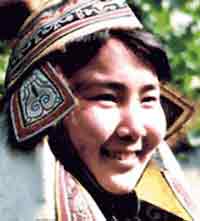 |
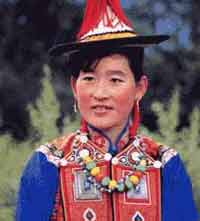 |
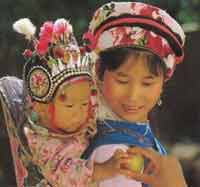 |
|||||||||||||||||||||||||||||||||||||||||||||||||||||||||||||||||||||||||||||||||||||||||||||||||||||||||||||||||||||||||||||||||||
| In ancient Chinese records, the name of Choson (Chao-xian) had appeared in almost all dynastic chronicles. There are two books that are worthy of special attention: "Shan Hai Jing" and "Huai Nan Zi". "Shan Hai Jing", namely, the Book or Classics of Mountains and Seas, recorded most of the myths and legends of ancient China, and this book, said to have been devised by Lord Yu, strangely, had the stories and accounts of lands as far as Europe and the Americas. Korea or Choson, as a springboard for accessing Sakhalin, the Bering Straits, Aleutian Islands and Japan, land and sea, is usually first mentioned. | |||||||||||||||||||||||||||||||||||||||||||||||||||||||||||||||||||||||||||||||||||||||||||||||||||||||||||||||||||||||||||||||||||||
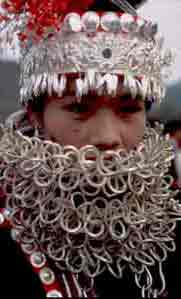 |
|||||||||||||||||||||||||||||||||||||||||||||||||||||||||||||||||||||||||||||||||||||||||||||||||||||||||||||||||||||||||||||||||||||
Two terms, Miao and Hmong, are both currently used to refer to one of the aboriginal peoples of China. They live mainly in southern China, in the provinces of Guizhou, Hunan, Yunnan, Sichuan, Guangxi and Hubei. According to the 1989 census, their number in China was estimated to be about 7 million. Outside China they live in Thailand, Laos, Vietnam and Burma, due to migrations starting in the 18th century, and also in the United States, French Guyana and Australia, as a result of recent migrations in the aftermath of the Indochinese wars. Altogether there are approximately 8 million speakers of the language. This language, which consists of 30-40 mutually unintelligible dialects, belongs, together with the Bunu language, to the Miao branch of the Miao-Yao (Hmong-Mien) language family. |
|||||||||||||||||||||||||||||||||||||||||||||||||||||||||||||||||||||||||||||||||||||||||||||||||||||||||||||||||||||||||||||||||||||
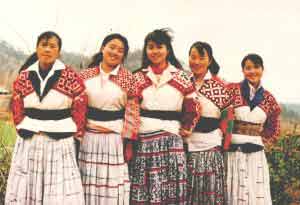 |
 |
||||||||||||||||||||||||||||||||||||||||||||||||||||||||||||||||||||||||||||||||||||||||||||||||||||||||||||||||||||||||||||||||||||
| With a
population of more than seven million, the Miao
people form one of the largest ethnic minorities in southwest
China. They are mainly distributed across Guizhou, Yunnan, Hunan and
Sichuan provinces and Guangxi Zhuang Autonomous Region, and a small
number live on Hainan Island in Guangdong Province and in southwest
Hubei Province. Most of them live in tightly-knit communities, with a
few living in areas inhabited by several other ethnic groups. |
|||||||||||||||||||||||||||||||||||||||||||||||||||||||||||||||||||||||||||||||||||||||||||||||||||||||||||||||||||||||||||||||||||||
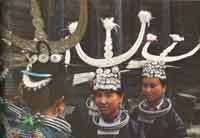 |
|||||||||||||||||||||||||||||||||||||||||||||||||||||||||||||||||||||||||||||||||||||||||||||||||||||||||||||||||||||||||||||||||||||
Myth OriginsThe English word
"myth" comes from the Greek word "mythos" which means word or story.
Humans have used myths to describe or explain things that they couldn't
have comprehended otherwise. Questions like: why do the seasons |
|||||||||||||||||||||||||||||||||||||||||||||||||||||||||||||||||||||||||||||||||||||||||||||||||||||||||||||||||||||||||||||||||||||
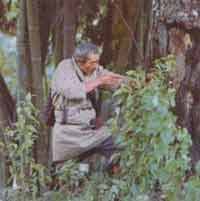 |
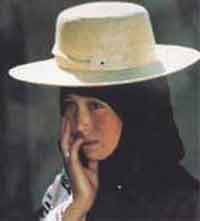 |
|
|||||||||||||||||||||||||||||||||||||||||||||||||||||||||||||||||||||||||||||||||||||||||||||||||||||||||||||||||||||||||||||||||||
|
Early Chinese literature was heavily influenced by Shamanism, Buddhism and Confucianism. The early literature, which began as an oral tradition, depicted a love of nature and man and held that man was a part of nature. Good was rewarded and evil was punished and values like loyalty to the King, filial piety, respect for one's elders, true friendship and chastity were emphasized. |
|||||||||||||||||||||||||||||||||||||||||||||||||||||||||||||||||||||||||||||||||||||||||||||||||||||||||||||||||||||||||||||||||||||
The Five ElementsWater has the properties of soaking and descending
The
history of Chinese literature begins with the Shih
Ching or Book of Songs, an anthology of 305 lyrics of various
types, compiled ca. 600 B. C. Most of the songs probably were composed
and sung between 1000 and 700 B. C., mostly at Chou court ceremonies
(and thus provide a cross-section of early-Chou culture). Some
Sinologists have suggested, however, that certain lyrics from the Book
of Songs may represent much earlier work, dating from the Shang dynasty
Whatever the work's true dates of composition, two important traditions account for the origin and survival of the Book of Songs. The first, recorded by a Chinese historian from the first century B. C., maintains that Confucius personally selected these 305 poems from an earlier collection of over three thousand. Choosing poems which exemplified his ideas about statecraft and harmonious personal relations, Confucius arranged them in their present order, revising the musical scores to which the songs were customarily sung. |
|||||||||||||||||||||||||||||||||||||||||||||||||||||||||||||||||||||||||||||||||||||||||||||||||||||||||||||||||||||||||||||||||||||
|
King
Mu and the |
|||||||||||||||||||||||||||||||||||||||||||||||||||||||||||||||||||||||||||||||||||||||||||||||||||||||||||||||||||||||||||||||||||||
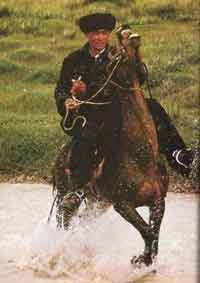 |
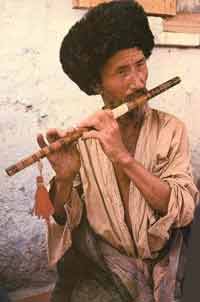 |
||||||||||||||||||||||||||||||||||||||||||||||||||||||||||||||||||||||||||||||||||||||||||||||||||||||||||||||||||||||||||||||||||||
|
Traditonal
Chinese
Compiled by: Glenn Welker This site has been accessed 10,000,000 times since February 8, 1996. | |||||||||||||||||||||||||||||||||||||||||||||||||||||||||||||||||||||||||||||||||||||||||||||||||||||||||||||||||||||||||||||||||||||




